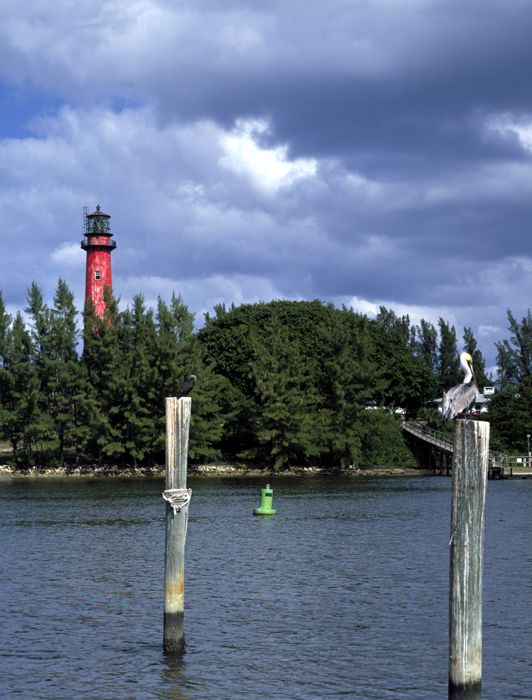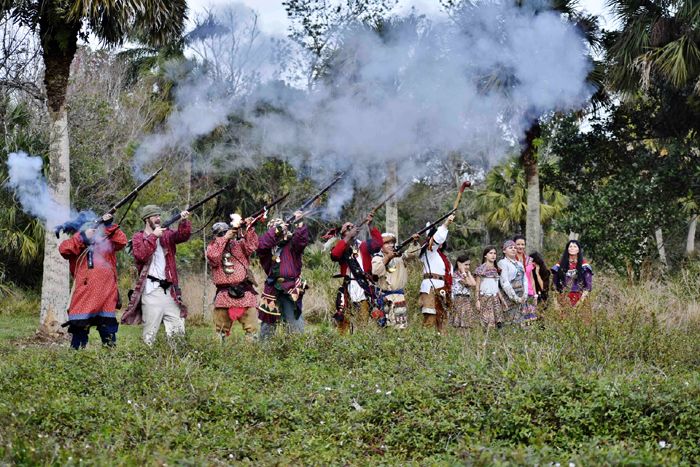
Echoes in the Estuary: Unearthing the Ghost of Fort Jupiter
The Loxahatchee River, a designated National Wild and Scenic River, meanders lazily through the heart of Jupiter, Florida, its dark tannin-stained waters reflecting the lush canopies of cypress and mangrove. Today, this scenic waterway is a playground for kayakers, paddleboarders, and fishermen, a serene backdrop to a thriving coastal community known for its pristine beaches, upscale living, and iconic lighthouse. Yet, beneath this veneer of sun-drenched tranquility lies a deeper, more turbulent history – a forgotten chapter etched into the very soil, where the whispers of a brutal war still echo, if one cares to listen. This is the story of Fort Jupiter, an ephemeral military outpost that played a pivotal, though often overlooked, role in one of America’s most protracted and tragic conflicts: the Second Seminole War.
To understand Fort Jupiter, one must first transport themselves back to Florida in the early 19th century, a wild and untamed frontier. Far from the manicured lawns and bustling marinas of modern Jupiter, this was a land of dense, impenetrable swamps, vast pine flatwoods, and a humid, unforgiving climate. It was also the ancestral home of the Seminole people, a confederation of Native Americans and African Maroons who had forged a unique culture amidst the challenging landscape. Their defiant resistance against forced removal from their lands ignited the Second Seminole War (1835-1842), a conflict that would prove to be the costliest and longest "Indian War" in U.S. history.
The U.S. Army, tasked with the impossible mission of rooting out and relocating the elusive Seminoles to Indian Territory (present-day Oklahoma), found itself constantly frustrated by the Seminoles’ mastery of guerrilla warfare and their intimate knowledge of Florida’s treacherous terrain. Supply lines were stretched thin, disease ravaged the troops, and morale often plummeted. It became clear that to succeed, the military needed to establish forward operating bases deep within Seminole territory, to disrupt their movements, destroy their food supplies, and pressure them into submission. Fort Jupiter was born from this strategic imperative.

In late 1837 and early 1838, the area around the Jupiter Inlet and the Loxahatchee River became a crucial focal point in General Thomas Jesup’s campaign. Jesup, commander of the U.S. forces in Florida, was determined to bring the war to a decisive end. He initiated a strategy of relentless pursuit, pushing his troops into the heart of Seminole strongholds. The Loxahatchee River, with its access to the coast and inland waterways, was a vital artery for both military logistics and Seminole movements. It was here, amidst the dense hammocks and sawgrass, that the U.S. Army established Fort Jupiter.
The fort itself was not a permanent, stone edifice. Like many frontier outposts of the era, Fort Jupiter was a temporary, hastily constructed encampment, likely consisting of log palisades, earthworks, and canvas tents or rudimentary wooden shelters. Its primary purpose was as a staging ground, a supply depot, and a temporary hospital. Soldiers, including infantry, artillery, and elements of the U.S. Navy and Marine Corps who supported coastal operations, would have endured harsh conditions: stifling humidity, swarms of mosquitoes, venomous snakes, and the constant threat of ambush. Disease, particularly malaria and dysentery, was often a more formidable enemy than the Seminoles themselves.
The most significant event associated with Fort Jupiter was the Battle of Loxahatchee, fought on January 24, 1838. General Jesup, leading a substantial force, was pursuing a group of Seminoles led by the formidable Chief Coacoochee, also known as Wild Cat. Coacoochee was a brilliant strategist and an inspiring leader, renowned for his daring escapes and his unyielding commitment to his people’s freedom. He had established a strong defensive position along the Loxahatchee River, utilizing the natural terrain – thick vegetation, swampy ground, and a deep river crossing – to his advantage.
As Jesup’s troops advanced, they walked into a well-laid ambush. The Seminoles, hidden amongst the dense foliage, unleashed a volley of fire, catching the American soldiers by surprise. The battle that ensued was fierce and chaotic, characterized by close-quarters combat in the difficult terrain. Jesup himself was wounded, and several officers and men were killed or injured. Despite the initial shock and the determined Seminole resistance, the superior numbers and firepower of the U.S. forces eventually prevailed. The Seminoles, though forced to retreat, inflicted significant casualties and demonstrated their unwavering resolve.
The National Park Service notes that the Battle of Loxahatchee was one of the few instances during the Second Seminole War where a large force of U.S. regulars engaged the Seminoles directly in open combat, rather than in small-scale skirmishes. While a tactical victory for the U.S. Army, it came at a considerable cost and underscored the immense difficulty of subduing the Seminole people. Following the battle, Jesup continued his campaign, eventually pushing many Seminoles further south into the Everglades, but the war dragged on for several more years.
Life at Fort Jupiter, though brief, would have been a stark existence. Soldiers would have spent their days clearing land, building fortifications, guarding supplies, and patrolling the dangerous surrounding wilderness. The constant threat of Seminole attack, combined with the relentless natural elements, created an atmosphere of perpetual tension. Letters and journals from soldiers of the era frequently lament the harsh conditions, the pervasive illness, and the demoralizing nature of fighting an enemy that seemed to melt into the landscape. One soldier, writing about the Florida campaign in general, famously described it as a "wretched, unwholesome, and profitless war."
The presence of Fort Jupiter also represents a crucial point of contact and conflict between two vastly different cultures. For the Seminoles, this was a fight for their very survival, their right to remain on their ancestral lands. For the American soldiers, many of whom were recent immigrants or conscripts, it was a duty, often performed under duress, in a land that seemed alien and hostile. The fort stood as a symbol of American expansion and the policy of Indian removal, an outpost of a burgeoning nation determined to assert its dominance over the continent.
After the Battle of Loxahatchee and the subsequent push south, Fort Jupiter’s strategic importance diminished. As the war evolved into a long, drawn-out affair of chasing small bands of Seminoles, the need for large staging posts in this particular area lessened. The fort was likely abandoned within a few months of its establishment, its temporary structures left to succumb to Florida’s rapid tropical decay. The dense vegetation quickly reclaimed the cleared land, and within a few years, little visible trace of Fort Jupiter remained.

Today, the exact location of Fort Jupiter is not precisely known, though historical research and archaeological efforts have narrowed it down to an area along the Loxahatchee River, likely near its confluence with the Indian River Lagoon. There is no grand monument or preserved structure. Instead, a few historical markers in the Jupiter area allude to the fort and the Battle of Loxahatchee, serving as subtle reminders of the dramatic events that once unfolded here. Local historical societies and enthusiasts continue to research and advocate for greater recognition of this important historical site.
The story of Fort Jupiter, though largely forgotten by the casual observer, is a powerful testament to the complex and often painful history of Florida and the United States. It speaks to the resilience of the Seminole people, who, despite immense pressure, never formally surrendered and whose descendants continue to thrive in Florida today. It also speaks to the sacrifices made by the American soldiers, who fought in an arduous and unpopular war.
In a town now synonymous with leisure and natural beauty, the ghost of Fort Jupiter serves as a poignant reminder that every landscape carries layers of history. The gentle currents of the Loxahatchee River, which once bore military barges and Seminole canoes, now carry the kayaks of tourists. But for those who pause to consider, the echoes of cannons, the cries of battle, and the unwavering spirit of a people defending their homeland can still be heard, whispering through the cypress knees and the rustling palms, reminding us that the past is never truly gone. It merely waits for us to listen.


